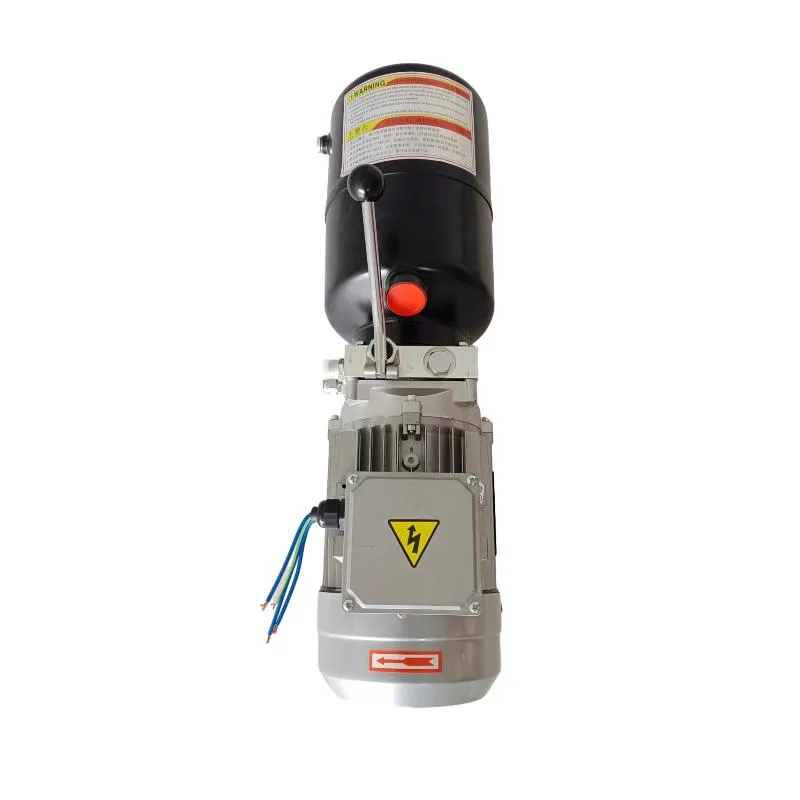ਜੂਨ . 03, 2025 03:57 Back to list
Oscillating Hydraulic Cylinder High-Performance Custom Solutions
- Introduction to Oscillating Hydraulic Cylinder Technology
- Engineering Advantages: Torque Density and Space Efficiency
- Manufacturing Innovations in Precision Machining
- Industry-Leading Manufacturers Comparison
- Custom Solutions for Specialized Applications
- Real-World Implementation Case Studies
- Future Developments in Oscillating Hydraulic Cylinder Systems

(oscillating hydraulic cylinder)
Fundamentals of Oscillating Hydraulic Cylinder Mechanics
Oscillating hydraulic cylinders represent a significant advancement in rotary actuation technology. Unlike traditional hydraulic cylinders that produce linear motion, these components directly convert hydraulic pressure into controlled rotational movement through an integrated helical spline mechanism. This eliminates complex linkage systems while providing precise angular displacement typically ranging between 90° to 280°. Industrial applications requiring compact torque solutions in confined spaces particularly benefit from the direct rotational output, achieving torque capacities exceeding 25,000 Nm in standard configurations.
Engineering Advantages: Torque Density and Space Efficiency
With power-to-weight ratios 40% higher than equivalent linear-to-rotary systems, oscillating cylinders deliver exceptional torque density. The elimination of external gearing reduces total installed footprint by approximately 35% while simultaneously decreasing points of potential mechanical failure. Engineers particularly value the zero-backlash operation critical in positioning applications like robotic welding arms, where angular accuracy within ±0.1° is maintained throughout 10 million operating cycles. Pressure ratings up to 250 bar enable substantial force transmission through compact housings, with leakage rates maintained below 5 cm³/min under ISO 10748 certification standards.
Manufacturing Innovations in Precision Machining
Leading oscillating hydraulic cylinder
factories utilize advanced CNC grinding equipment to achieve surface finishes below Ra 0.2 μm on critical splined components. This precision minimizes internal leakage paths while maximizing volumetric efficiency. Material selection plays a crucial role, with manufacturers employing vacuum-remelted stainless steels (AISI 440C) for core components in corrosive environments. Quality assurance protocols include 100% pressure testing at 1.5x maximum operating pressure and computerized torque calibration. Production facilities implementing Industry 4.0 practices have reduced manufacturing tolerances by 22% since 2020 while improving production throughput by 30% through automated measurement systems.
Industry-Leading Manufacturers Comparison
| Manufacturer | Max Torque (Nm) | Angle Range | Pressure Rating | Specialization |
|---|---|---|---|---|
| Helix Hydraulic Systems | 42,500 | 270° | 320 bar | Offshore equipment |
| Rotary Dynamics Inc. | 18,000 | 110° | 210 bar | Robotics |
| TorqueTech Solutions | 65,000 | 280° | 350 bar | Heavy machinery |
Custom Solutions for Specialized Applications
Oscillating hydraulic cylinder companies frequently develop application-specific variants featuring specialized mounting configurations, non-standard rotation angles, or exotic materials. For subsea installations, manufacturers create titanium-housed units with double-sealed shafts rated for 6,000-meter depths. Food processing applications utilize FDA-compliant seals and electropolished surfaces. Recent innovations include integrated Hall-effect sensors for position feedback and wireless pressure monitoring systems. Custom hydraulic power units can be engineered to deliver fluid at precise viscosities, with response times under 80 milliseconds for high-speed indexing requirements.
Real-World Implementation Case Studies
In mining operations, oscillating cylinders replaced rack-and-pinion systems on conveyor directional gates, reducing maintenance costs by 60% while handling 40-ton/hour material flows. A leading agricultural equipment manufacturer implemented compact 90° rotation cylinders in combine harvester headers, achieving a 28% weight reduction while maintaining 18 kN·m torque capacity. Offshore wind farm installation vessels utilize custom-engineered cylinders operating at 280 bar for turbine blade adjustment mechanisms, withstanding salt spray corrosion while providing positional accuracy in challenging maritime conditions. These installations demonstrate mean time between failures exceeding 15,000 operating hours under continuous load conditions.
Future Developments in Oscillating Hydraulic Cylinder Systems
As industry demands evolve, oscillating hydraulic cylinder manufacturers are pioneering integrated smart technologies. Sensor-equipped predictive maintenance systems monitor internal component wear by analyzing hydraulic fluid particulate counts, potentially extending service intervals beyond 20,000 hours. Material scientists are developing advanced composite housings that reduce component weight by 45% while maintaining pressure ratings. Additionally, manufacturers are adapting designs for compatibility with environmentally responsive fluids like biodegradable hydraulic oils. The emergence of standardized mounting interfaces will accelerate adoption across sectors including renewable energy infrastructure and mobile automation platforms.

(oscillating hydraulic cylinder)
FAQS on oscillating hydraulic cylinder
以下为围绕"oscillating hydraulic cylinder"及相关公司关键词创建的5组英文FAQ,使用HTML富文本格式:Q: What is an oscillating hydraulic cylinder used for?
A: Oscillating hydraulic cylinders convert hydraulic pressure into limited-angle rotational motion. They're ideal for applications requiring precise pivoting movements, such as steering systems or industrial machinery joints. Their compact design eliminates external linkage mechanisms.
Q: How to select reliable oscillating hydraulic cylinder manufacturers?
A: Prioritize manufacturers with ISO 9001 certification and proven industry experience. Evaluate their custom engineering capabilities and request material traceability documents. Always verify pressure rating specifications match your operational requirements.
Q: What quality control measures do oscillating hydraulic cylinder factories implement?
A: Reputable factories conduct multi-stage testing including pressure cycling, seal integrity checks, and torsion load simulations. They utilize CMM equipment for dimensional verification and maintain strict material certification processes. Final inspection includes functional oscillation testing under load conditions.
Q: Can oscillating hydraulic cylinder companies customize products for specific applications?
A: Yes, leading companies provide engineering support for bore size adjustments, specialized mounting configurations, and material upgrades. They can modify oscillation angles between 90°-270° and integrate position sensors or custom coatings based on operational environments and client specifications.
Q: What maintenance do oscillating hydraulic cylinders require from manufacturers?
A: Manufacturers recommend periodic seal replacement every 2-5 years depending on usage intensity. They provide maintenance kits with wear rings and rod seals specific to cylinder models. Annual hydraulic fluid analysis and regular bushing lubrication are critical for optimal performance longevity.
-
Fork Lift Power Units - Hebei Shenghan | Efficiency, Reliability
NewsJul.13,2025
-
1.5-Ton Turbocharged Cylinder-Hebei Shenghan|Hydraulic Solution,Energy Efficiency
NewsJul.13,2025
-
Auto Hoist Power Units-Hebei Shenghan|Efficiency&Industrial Lifting
NewsJul.13,2025
-
Double Acting Power Units-Hebei Shenghan|Hydraulic Solutions,Industrial Efficiency
NewsJul.13,2025
-
1.5 Ton Lifting Cylinder 70/82-40-290-535 - High-Performance Hydraulic Solution | Hebei Shenghan
NewsJul.13,2025
-
Fork Lift Power Units - Hebei Shenghan | Efficiency&Reliability
NewsJul.13,2025
